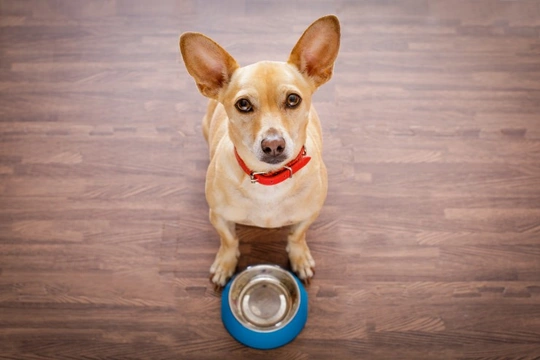
Five tips for dog owners that feed tins or wet food to their dogs
One of the great polarising debates of dog ownership concerns the best way to feed a dog-wet food, dry food, a combination, raw food, or any other widely recognised feeding ethos that you can think of. However, for most dog owners, the question is simply dry, wet or both-and whatever method you pick for your pet will have its pros and cons, benefits, and potential challenges.
Today, most dog owners feed their dogs a mixture of dry and wet food, although some dogs do of course eat wet food only with no dry-particularly those that may be prone to kidney stones and urinary tract disorders. If you feed your dog a mixture of wet and dry or feed wet food only (such as pre-prepared and sealed tines, pouches or trays etc.), it is worth finding out if there is anything you can do or should be doing to make sure that you get the most out of your dog’s food.
In this article, we will share five tips for dog owners that feed wet food of any kind, be that tins, pouches or trays, to their dogs. Read on to learn more.
Storage and refrigeration
Sealed wet food can be stored in the cupboard, because it will not go off while it is still in date and unopened. Store in a cool, dry place such as a cupboard, and when you buy new food and replenish your supplies, make sure that you rotate the food in the cupboard so that you use the oldest food first, and do not end up finding tins that are a couple of years out of date when you eventually empty the cupboard!
On that note, clean out the dog food cupboard as regularly as you would your own food cupboards, and check for signs of damp or rodents and other nasties that can affect the quality and safety of your dog’s food.
If your dog does not eat a whole packet of wet food in one sitting, this can be stored for later use-decant cans or tins into another, non-metallic container with a lid, and keep it in the fridge. Wet food will keep in the fridge for up to 24 hours, but food that is not used within this time should be disposed of as it may begin to spoil and/or lose its flavour and texture. Most pre-packaged wet dog food cannot be frozen when open, so bear this in mind.
Preparing and serving
Dogs will eat most things put in front of them (and some things that aren’t!) but taking care over how you prepare and serve your dog’s food will make sure that it is fed to them in optimum condition, and is palatable to them.
If you have taken food out of the fridge, allow it to come up to room temperature before serving it to your dog to make it more palatable to them.
Also, always wash your dog’s food bowl every day like you would with your own plates, and avoid using metal or plastic bowls which can leech minerals and chemicals into food over time.
If you like to mix your dog’s wet food with some dry kibble, do this just before serving-dry food mixed with wet and left to sit will become mushy and defeat the object of offering dry food too!
Dental care
Dogs that are fed a diet of wholly or mainly wet food will have a lower risk of kidney and bladder stones and related problems in later life-particularly in the case of male dogs, who are more prone to such problems. However, wet food tends to stick to the teeth more than dry food and so, is more likely to lead to plaque, tartar, tooth decay and gum disease, which means that taking good care of your dog’s teeth is vital.
Brushing your dog’s teeth a few times a week is strongly recommended by vets, and is the best way to keep your dog’s teeth in good condition, regardless of what you feed them. Additionally, check your dog’s teeth regularly for signs of problems, and never ignore bad breath.
Assessing the results
Certain types of foods tend to be a better fit for some dogs than others, and so there is no one size fits all “best” food for all dogs. Certain factors will differ depending on what you feed your dog-for instance, feeding kibble results in feeding smaller quantities to provide the same level of nutrition, which usually leads to smaller stools as well.
A dog fed wet food may have larger stools than one fed dry food, but these should be firm and healthy-looking, and not sloppy or runny. Also, your dog should look good, with bright eyes and a healthy coat, as well as having enough energy and generally being well and in good condition.
If your dog doesn’t seem to be at the peak, their food may not be a good fit, so talk to your vet about the causes and potential alternatives.
Troubleshooting
Even if you have been feeding your dog the same diet for years with no problems, it is still wise to keep an eye out for signs of potential issues that can arise as time goes by, such as their food not producing as good results as it used to do, or no longer being the best fit for your dog.
Life stage changes, health issues, your dog’s fitness and lifestyle and a range of other factors will all dictate and affect what your dog needs from their food, so monitor and reassess your dog’s diet on an ongoing basis to ensure that it is still a good fit and doing what it should!



